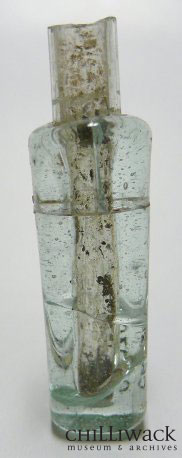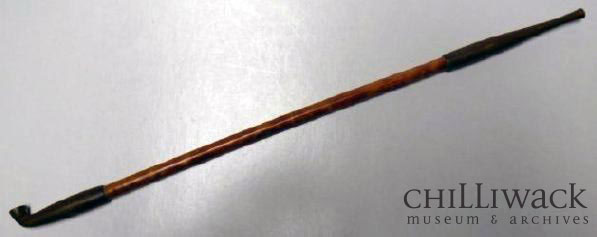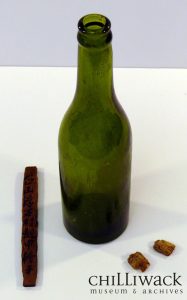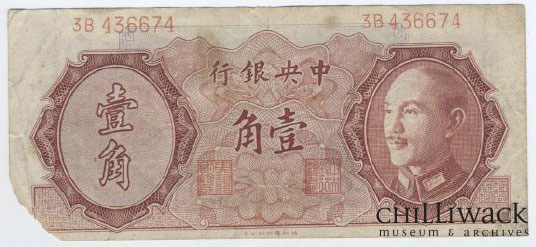Chilliwack’s Chinatowns: Fact or Fiction?
Have you learned all there is to know about Chilliwack’s Chinatowns? Keen to learn a little bit more? Check your knowledge with our four questions below to see if you can identify which of the statements below about Chilliwack’s Chinatowns are fact and which are fiction.
Fact or Fiction?
Alcohol was the drug of choice amongst Euro-Canadians, whereas opium was favoured by the Chinese community in Chilliwack.
Is this fact? Or is it fiction? Click the photograph below to discover the answer.
Bamboo pipe of Chinese origin.
Chilliwack Museum and Archives, 1957.019.068
Fact or Fiction?
Opium was made illegal in 1908.
Is this fact? Or is it fiction? Uncover the truth by selecting the picture of the bottle.
Widely known as “opium bottles,” medicine bottles such as this commonly contained traditional Chinese remedies.
Chilliwack Museum and Archives, 1982.015.003
Fact or Fiction?
The largest social event in the Chinese community was the funeral.
Is this fact? Or is it fiction? Click the photo to learn more about funerals in Chilliwack’s Chinese community.
Glass bottle with accompanying wooden Chinese grave markers found at Little Mountain Cemetery.
Chilliwack Museum and Archives, 1985.035.002 a-d
Fact or Fiction?
The Chinese Masonic Hall was established in 1917 to act as the Chinese community’s barber shop in Chilliwack.
Is this fact? Or is it fiction? Select the banknote below to learn more about Chilliwack’s Chinese Masonic Hall.
Ten cent currency issued by the Central Bank of China
Chilliwack Museum and Archives, 1988.039.002b




